
Hi All!
Sorry, that took us so long to get back to the blog but the team just got back home from an incredible two-week journey to the origin of BIM, the ARCHICAD factory! It has been one of the greatest moments in our history as enzyme!
Believe it or not, we were invited to share our story and our experience in the Key Client Conference organised by Graphisoft each year, and this time in the beautiful Budapest.
Though the memories are starting already to blur a little we want to share with you the emotion and also the main ideas that were discussed in this event: Architecture, Technology and Innovation.
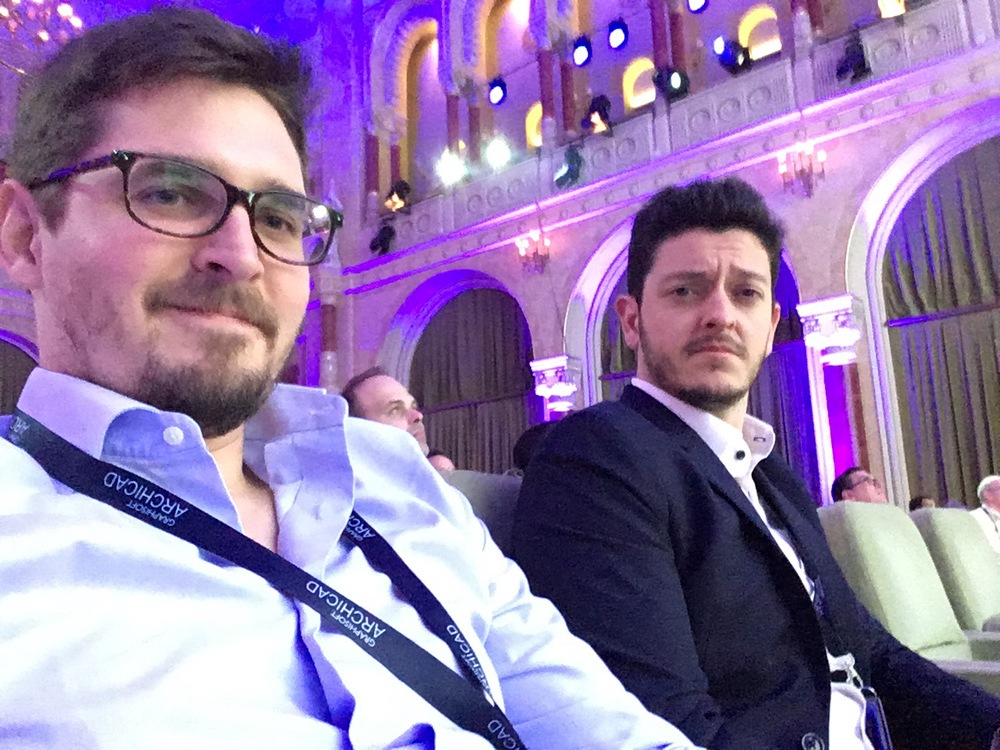
Calming the nerves prior to being called on the stage…
It really felt it was no longer a conference about BIM. It felt like a group of architects, engineers and passionate professionals getting together for a few days and discussing how architecture and technology are catching up with the new demands from our society and environment.
We all thought we were about to discuss how architectural practices face their daily challenges using BIM combined with different technologies, but the outcome was more inspiring than expected.
I would like to share what for me were the most important messages that we all learned during those days:
AEC Industry is changing quickly
The Industries are changing as fast as tools and technologies. Those who embrace this change and evolve with it will see the benefits in their own workflow, their results and the enhancements of their capabilities. It is also a matter of choosing to position ourselves as pioneers or followers.


Marko Dabrovic from 3LHD explains how new technologies and in-house revolutionary workflows are crucial to achieving award-winning projects.
Many agents of the industry are resisting to implement technology and workflows in their own practices. But what it really means is that they are slowing the integration of capabilities and learning.
The responsibilities, the legal framework of our industry is starting to be in crisis due to the evolution of technology. Deliverables, liabilities, pricing, schedules, etc..; all these crucial targets and assets of our profession are changing because of the way we develop projects and we achieve results.
Architecture requires a Rich Palette of Tools
When it comes to using BIM on a daily basis the combination with other tools, technologies and workflows are crucial. The use of BIM has been proved to be a great workflow in many ways, but it is easy to see the limitations as well if we use it as a single tool. Architecture is a multidisciplinary subject and it requires multidisciplinary tools.
It was fun to see how a good number of the speakers had their own “tool’s slide”. Everyone wanted to show off displaying the different expertise they had in the use of different tools, software and technologies.

Vitali Krestianchik and Elena Myznikova from PRIDE develop workflows that combine BIM with a different set of tools in order to solve extremely complex projects.
But this fun fact is actually a reflection of the reality. Companies anchored in the use of tools that are totally outdated may not see the wave falling upon them till its very late. We need to be ready to surf that wave along and not letting it sweep us away.
Data is the New Value
Getting a little bit in details when it comes to BIM, very often we jump into the new possibilities that the industry is experiencing thanks to this new present inside these tools: Data. As we all know “information is power”. And at all scales projects have always needed to handle a heavy flow of information. The problem is that it is always hard to handle a huge amount of information. Architecture has always been damaged by our poor capacity to handle this information that is inseparable from our practice.

Ana Matic from Penoyre & Prasad shows the insights of designing Architecture projects complying with BIM advanced standards of the UK.
BIM give us full capacity to control this information and even more than what we used to have. It is not easy to dominate the art of using the information in our own favour. But data is there for us to use it. All stakeholders will see the benefits of using and controlling the data of our projects. The cost, timing, quantities, dimensions, specifications, descriptions, etc.. all these pieces of data are inside our models and can be automatically updated, are more accurate and more reliable.
Innovation is the Key to Survive
It may sound a bit dramatic but the moment we stop innovating we begin to be outdated.
This idea could be linked to the first one I wrote previously. As the industry is rapidly changing we also need to adapt to this change. But the mindset could be totally different than just adapt to the change or be able to evolve with it. Innovation as a standard approach to our projects is the key to give the answers that our changing society and environment are asking for.

Michael Lohmann from Delugan Meissi Architects showcases pioneering methods of implementing technology in their design process.
When we have innovation in the everyday vocabulary of our company most likely we will be able to embrace the new challenges that the industry is placing in front of us. And most likely we will be able as well to give answers to questions that we couldn’t answer before.
The Value of Human Ideas
During all the endless conversations and debates about technology, BIM workflows, Innovation, Data, Virtual Reality, AI, etc..; this message was always coming back. Are we still in control of our ideas when it comes to Architecture? Are we driving the machine or the machine is driving us?
We cannot forget that all this innovation and technologies are the means that we use to develop our projects. Sometimes we can forget that and let ourselves be limited or be influenced by the possibilities of the tools we use.

A slide during the Graphisoft presentation displaying Balkrishna Doshi, the latest Pritzker Prize.
Technology improves our possibilities and is impossible to avoid technology to influence the way we live, we design and we do architecture and space. True ideas can be enhanced by the implementation of technology if we know how to keep the pure and strong during the process.
Few Highlights from the Event
They were some specific highlights during the sessions that we think can illustrate clearly some of this, perhaps more abstract, concepts.
Keiichiro San, from Kajima Corporation Global BIM, showing how they are integrating BIM with things like IOT (Internet of things) and AI, enhancing the workflow of Construction and Facility management. But also illustrating how even the integration of this systems in the buildings could influence the daily life of users. Examples of this are the smart parking, self-driven cars, courier delivery to specific building coordinates like balconies or windows…
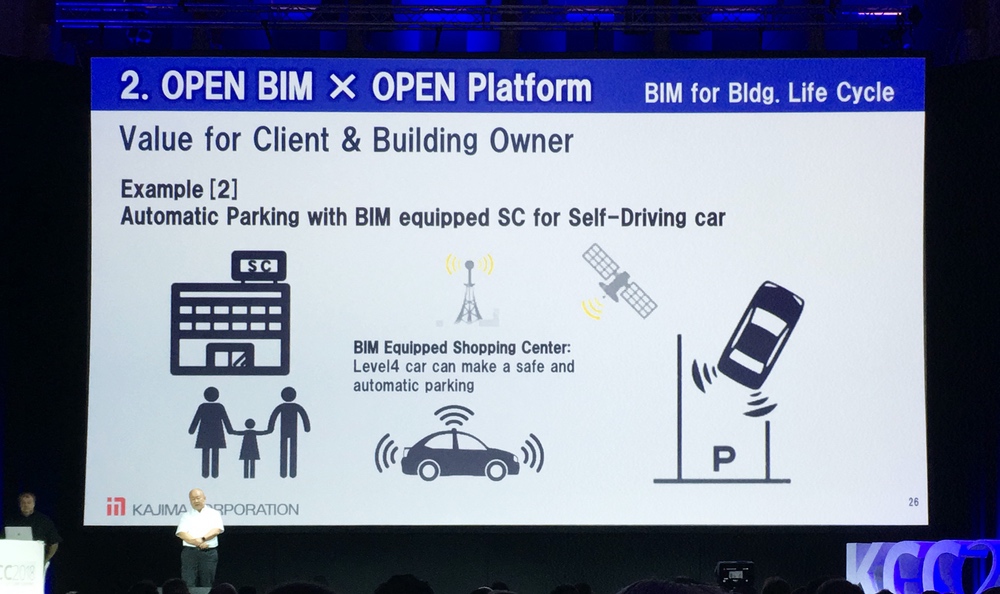
Keiichiro Yoshida from Kajima x Global BIM talking about the potential of integrating AI with BIM for improving the use of Buildings.
Aidea from the Philippines is a stunning example of how this early adoption of the technology and their commitment to the change made them grow enormously. Also once you have a system in place how important is to review it, share the knowledge within the company, keep the team updated and also how the investment in research and development (plugins and scripting) made them much more competitive and gave them more time to spend on design.
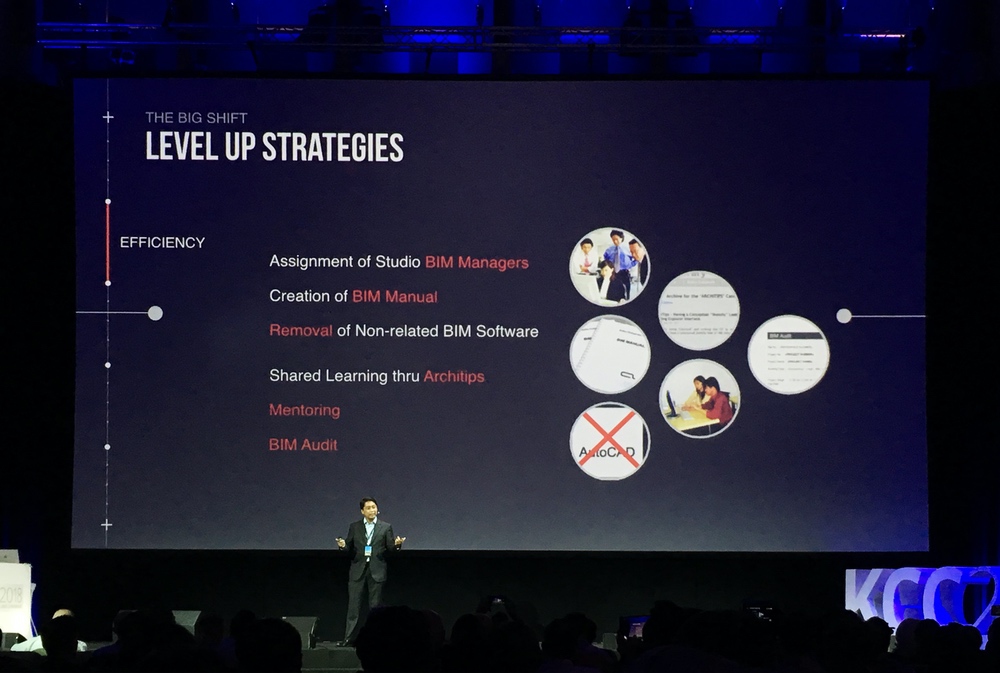
Jojo Tolentino sharing the strategies that allowed Idea to grow till they became Nº62 in the Building Design (BD) World Architecture 2015 Top 100 Architects.
Link Arkitektur developed one mayor project using an IPD contract (a new type of contracts more suitable for collaborative workflows) and almost with no documentation >> BIM models are the delivery. It is a real case study of a new legal collaboration and delivery format between stakeholders. An architecture project requires a multidisciplinary teamwork effort in which all consultants share responsibilities. This new way of setting up legal agreements for collaboration reflects the way projects are meant to be delivered.

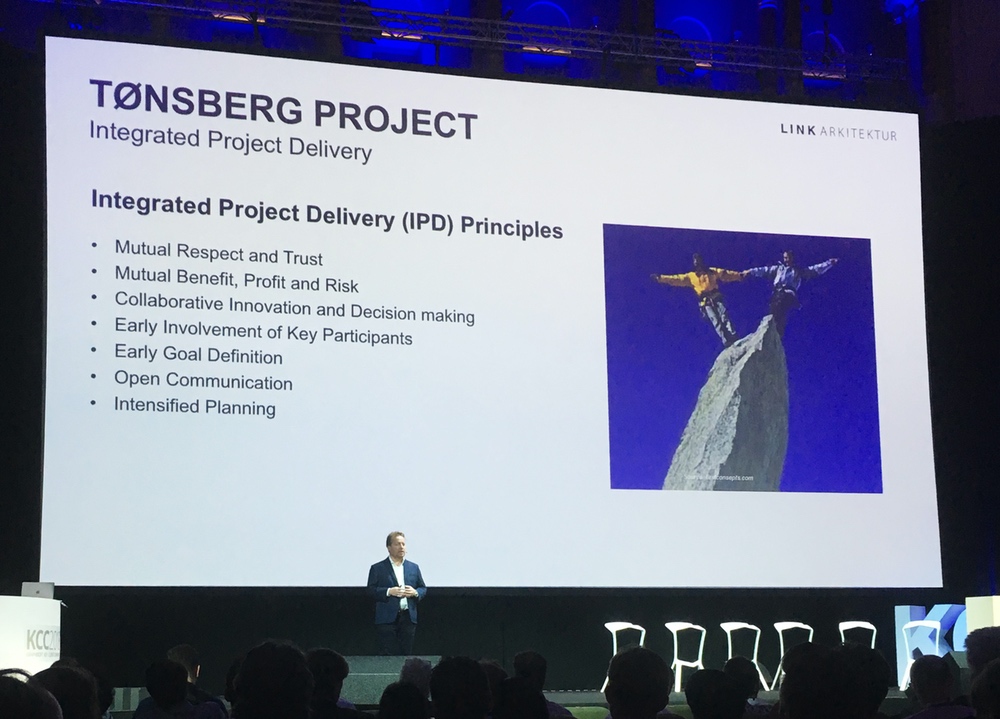
Steen Sunesen from LINK Arkitektur explain the challenges and benefits of the Integrated Project Delivery
Lunden Architecture from Finland showed the capabilities that we can develop to answer problems that clients still are not aware of. Sometimes we have capabilities that we want to implement in our projects but unfortunately, clients don’t see the benefit of them. What they did is that they developed their own project to implement these new technologies to achieve new results and make the statement that it is possible. Is a great example that inspired us to keep developing our capabilities no matter the circumstances. Later on, potential clients will be able to understand these new values and may ask for it, as it was the case with Lunden Architecture.
Also Marko Dabrović from 3LHD showed us their adventures of how great architecture is design and built with effort and patience and how they transitioned from a local firm in Croatia to a Boutique International firm with projects in Europe and Asia, and how the adoption of technologies as 3D scanning and BIM, just empowered the value of ideas and intuitions while making possible to build some of the challenging projects they were up to.

Eero Lunden from Lunden Architecture talks about the pavilion they built and burned during the Burning Man event using advanced technology in the construction process.
In this occasion, we had the opportunity to come up on stage and share the experience of our three years of life. We can tell that in an event like this we are walking in between giants… But nevertheless, we shared our workflow and our values when it comes to giving answers to new problems.
We shared the challenges that a small company faces when competing with big established offices and overall we showed the value of taking the risk, trying new workflows and getting involved in numerous projects! Compared with most of the participants, we are a small team, but we are flexible and we are eager to try!
We’ll share our vision and a short version of our presentation soon!

Jorge Beneitez and myself explaining how we design project using BIM, Algorithmic Design and other tools from the early stage of a project till construction.
The panel discussions, the conversations after the conferences and the feedback from all attendees and speakers were very powerful. We have come back with renewed energy and loads of inspiration to keep pushing the boundaries and the markets. And we want to encourage all our Architect colleagues, engineers, contractors and other professionals to keep trying to change things, make the difference in the way we work, think, the way we design and build.

One of the discussion panels after the morning session. Jojo Tolentino, head of Aidea at one side and Keiichiro san on the other side discussing the value of human ideas and the penetration of technology in our industry.

In another discussion panel Elena and Vitali from PRIDE, Marko from 3LHD and Chad Oppenheim, from Oppenheim Architecture discussing the value of new technologies in their Architectural processes.
I just realised a funny thing! Reading through the article, I saw that I only mention ARCHICAD once, in a post about the Graphisoft Key Client Conference! And this tells you how good has been this event! The focus of everyone these past days was actually on the design, on the ideas, on the projects…. ultimately on the use that we do of the tools and not really the tools itself… You know when a tool is good when you almost forget that is there…
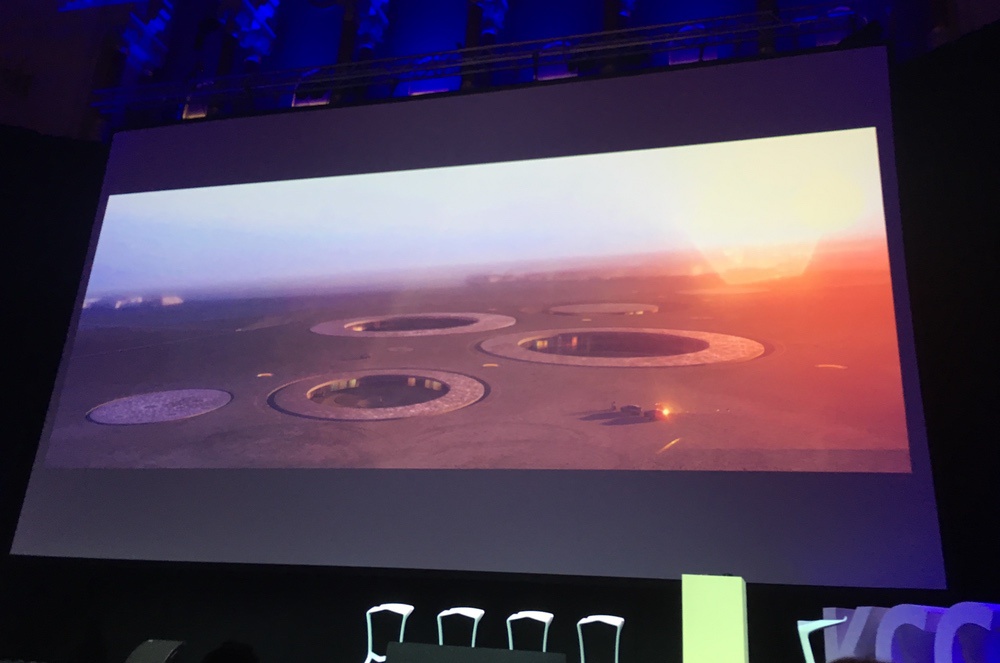 Star war’s like project by Oppenheim Architects, who did a demonstration of amazing architecture and incredible presentation skills!
Star war’s like project by Oppenheim Architects, who did a demonstration of amazing architecture and incredible presentation skills!
Special thanks to Graphisoft for organising such a great event and giving us the possibility of joining it. Thanks also to all speakers for sharing such great knowledge and experience.
Thank you for reading us and stay tuned for the next article!
 Old friends and new friends! The Asian team after the morning session.
Old friends and new friends! The Asian team after the morning session.

